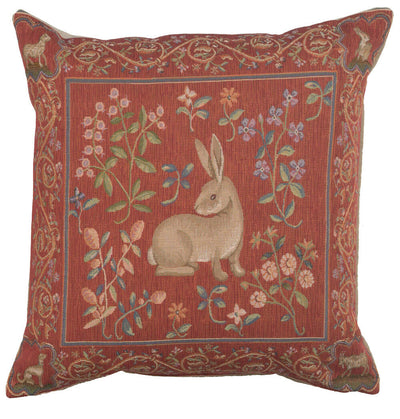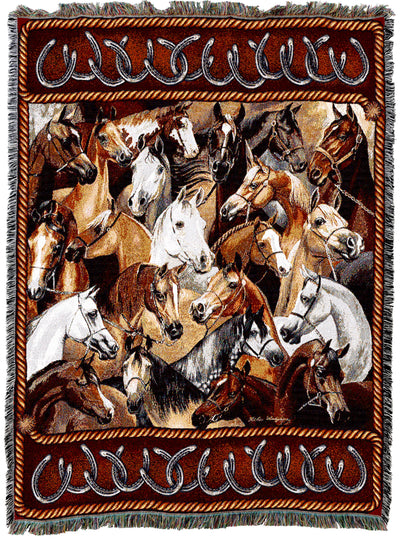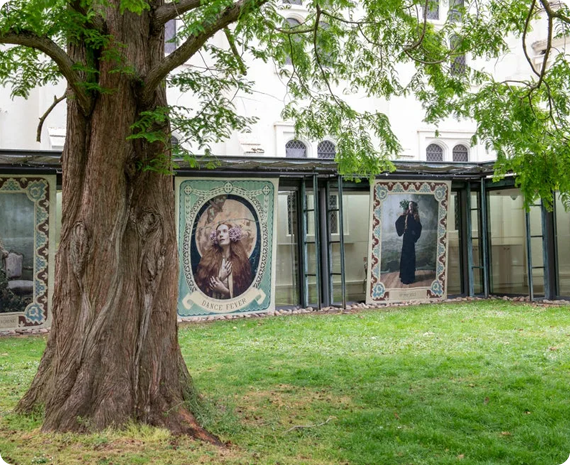How To Weave Stunning Woven Wall Hangings: Patterns And Techniques For Beginners
Geometric designs, rich textures, and fringes give woven wall hangings a beautifully complex appearance—almost daunting to create, especially with all the unfamiliar tools and terminology.
But if we look deep into this, tapestry weaving is built on a simple concept: interlacing weft threads over and under warp threads stretched across a loom. What makes each piece unique is the pattern—and that’s where the creativity (and a little bit of learning) comes in.
That’s exactly why we created this beginner-friendly guide. Inside, you’ll find a clear, step-by-step introduction to essential weaving patterns and techniques—from the classic plain weave to decorative favorites like the soumak braid and rya knots. Each method is explained in an easy-to-follow, approachable way.
Basic Tapestry Weaving Patterns and Techniques You Ought To Know
1. Plain Weave (Tabby Weave)
The plain weave, often referred to as the tabby weave, is the simplest and most ubiquitous structure in tapestry making. It serves as the foundational pattern upon which more complex techniques are built.
Technique & Process
In plain weave, the weft (horizontal) thread interlaces with the warp (vertical) threads in an alternating pattern: passing over one warp thread and under the next across the width of the fabric. In the subsequent row, this pattern is reversed so that each weft thread interlaces oppositely to the one above or below it.
2. Rya Knots (Fringe Technique)
Rya knots are one of the most popular techniques in tapestry weaving to add texture, dimension, and decorative elements—especially when creating fringes or shaggy surfaces. Originating from traditional Scandinavian rya rugs, this method has evolved into a staple for modern weavers, particularly in woven wall hangings and fiber art.
Rya knots are the type of pile knot tied onto the warp threads of a loom. Each knot secures one or more strands of yarn, which then hang freely to form a soft, fringed appearance.
How to Make a Rya Knot
To create a rya knot:
-
Cut several strands of yarn to the desired length of your fringe or pile.
-
Take the group of yarn strands and fold them in half if you're going for a looped look (optional).
-
Weave the strands over and under a pair of adjacent warp threads.
-
Pull both ends down between the warp threads and tighten to secure the knot.
Pro Tip: You can space these knots out for a more airy fringe or pack them closely together for a fuller, more textured effect. Many weavers use a ruler or card to keep the length consistent across rows.
3. Soumak Weave (Braided Effect)
The Soumak weave is a decorative tapestry weaving technique that adds a braided or wrapped texture across the surface of the warp. Rooted in ancient rug-making traditions from regions such as the Caucasus and the Middle East, this method has been used by modern weavers for its ability to add complex detailing and dimensional depth to woven works. Unlike the basic plain weave where the weft simply passes over and under warp threads, the Soumak weave involves wrapping the weft around the warp in a looping, diagonal motion. This creates a raised, chain-like pattern on the front of the tapestry, while the back displays long, floating threads.
Technique & Process
-
Take the weft yarn and wrap it around a warp thread from front to back, moving from left to right (or right to left, depending on your starting direction).
-
Skip one warp thread and repeat the same wrapping motion around the next.
-
Continue this pattern across the desired area.
-
To reverse direction, you can work a return Soumak row—wrapping in the opposite direction—which can create a braided or twisted cable look.
4. Twill Weave (Diagonal Pattern)
The Twill weave is known for its distinct diagonal pattern on wall art tapestry. It is defined by a staggered over-and-under sequence, typically involving the weft yarn passing over two or more warp threads and under one or more. This pattern shifts in each subsequent row, creating a diagonal ridge across the surface. The diagonal effect arises because the starting point of the pattern shifts by one warp thread in each successive row. Common twill patterns include:
-
Simple Twill: A consistent diagonal line.
-
Herringbone: A zigzag version created by reversing the direction of the twill.
-
Diamond Twill: Diagonal lines that meet to form diamond shapes.
Technique & Process
Here’s a basic method to weave a 2/2 twill on a tapestry loom:
-
In the first row, pass the weft yarn over two warp threads and under the next two, repeating this sequence across the row.
-
In the second row, shift the pattern over by one warp thread—start over the second warp thread (instead of the first), then under the next two, and so on.
-
Repeat this staggered pattern with each row, which gradually moves the structure diagonally across the tapestry.
You can also reverse the direction after a few rows to form chevrons or diamond patterns.
5. Lark’s Head Knot (Hanging Technique)
The Lark’s Head Knot is a foundational method used in both macramé and tapestry weaving, primarily for attaching yarn or cord to a dowel, rod, or loom bar. Though not a weaving pattern, it serves an essential structural purpose by securing warp threads or decorative strands at the beginning of a project.
Technique & Process
-
Fold a length of yarn or warp thread in half, forming a loop at the folded end.
-
Place the loop over your dowel or rod (the top bar of your loom or hanging stick).
-
Pull the two loose ends through the loop, drawing them downward to tighten around the rod.
-
Adjust the position and tension so the knot sits neatly and evenly.
To wrap up:
Now that you’re familiar with the essential weaving patterns and techniques, the creative possibilities are endless. With a bit of practice and experimentation, you’ll be able to mix, match, and layer these styles to design truly one-of-a-kind hanging woven wall decor. If you’re looking for inspiration or want to see expert tapestry artistry up close, check out the professionally made woven wall hangings at Quality Tapestries. Each tapestry is masterfully woven in Belgium, France, and Italy using time-honored Jacquard loom techniques—renowned for producing intricate patterns, dimensional texture, and beautiful details. Check out the collection now at our website for tapestries in custom designs, and find your inspiration!
















